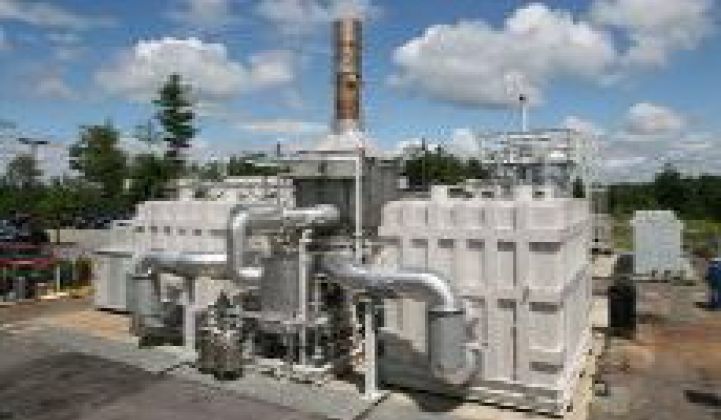I have gotten an enormous amount of mileage from this list. It is my list of profitable fuel cell firms, and it goes like this:
1.
2.
3.
There is still not a single, pure-play, public fuel cell company that has experienced anything close to profitability. But FuelCell Energy (Nasdaq:FCEL) is threatening to actually add its name to the list. The firm has just had a quarter with record operating results, its first-ever positive gross margin, and has a pipeline of projects currently underway.
FuelCell Energy builds molten carbonate stationary fuel cell power plants located at wastewater treatment sites, universities, pump stations, and sites that need low-emission baseload distributed generation.
Going by headlines, one would think that Bloom Energy invented fuel cells and pioneered their commercialization. In reality, fuel cells were invented in the 1800s and there is a large crowd of fuel cell firms going after the same stationary fuel cell market. They have in common a strong technological focus, a dependence on subsidies, and a tendency to lose enormous sums of money. Vendors in this sector include FuelCell Energy, Acal Energy, Ceres Power, UTC, ClearEdge Power, and Idatech.
FuelCell Energy's largest customer is POSCO Power, an independent power producer based in South Korea. But FuelCell Energy has also sold two 1.4-megawatt power plants to California utility PG&E and has three new plants in Southern California soon to be operational.
South Korea adopted a renewable portfolio standard (RPS) in 2010 with 350 megawatts of renewable energy per year mandated through 2016, and 700 megawatts per year through 2022. Fuel cells operating on natural gas and biogas fully qualify under the RPS.
FuelCell Energy (Nasdaq:FCEL) reported revenue of $69.8 million in 2010 compared to $88.0 million for the comparable prior year. Net loss for 2010 was $58.9 million. The firm looks to get to profitability at an yearly shipment rate of 85 megawatts to 90 megawatts.
Production levels are currently at 56 megawatts annually compared to production of 22 megawatts in 2010. The company has a market cap of $153.64 million and reported revenues of $31.2M in its most recent quarter.
Declining prices, government incentives, demand for cleaner power and improving technology have begun to revive the fuel cell industry. In the U.S., fuel cell incentives include a federal tax credit for 30 percent of the cost of a fuel cell. California kicks in another $2.50 per watt. The U.K. has a feed-in tariff for micro CHP, which readily applies to fuel cells.
Without a doubt, there are some applications for which fuel cells make perfect sense, such as premium power for the military, remote sites, construction industry, travel, etc. But fuel cell firms have learned the hard way that they must focus on the requirements of specifically addressed niche markets. And they must continue to scrub costs out of their systems.



